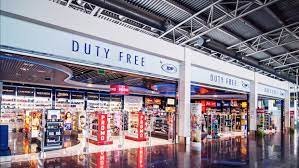Travel Retail: The next big thing in Indian business

According to Fortune Business Insights, the global travel retail market size is anticipated to hit USD 96.11 billion by 2029 and exhibit a CAGR of 8.1 percent during the forecast period.
The increasing number of international travelers is likely to drive the market’s growth. Fortune Business InsightsTM has presented this information in its report titled, “Travel Retail Market, 2022-2029”. The market size stood at USD 51.28 billion in 2021 and USD 55.74 billion in 2022.
Asia Pacific region to dominate the market in 2021. India is expected to dominate in the Asia Pacific region.
The recent Mordor Intelligence report stated that ‘Travel Retail’ is the next great frontier of the Indian Retail Sector.
As people’s incomes rise, India’s position as a business powerhouse and tourist destination will also continue to solidify, leading to the growth and prosperity of this industry.
COVID-19 has all but wiped out the travel industry in India and the passenger numbers continue to be affected in India even in 2021 owing to existing lockdowns and restrictions in the wake of the second wave of the pandemic.
In 2020, less than 3 million foreign tourists visited India with a dip of around 75 percent when compared to 2019 due to travel restrictions imposed. The COVID-19 outbreak impacted duty-free shopping behavior, spending, and browsing likelihood on a category level, with this being particularly the case with luxury items in India. As a result of the pandemic, shoppers have moved to online shopping in greater swathes than before, and several travel retail operators, including Delhi Duty-Free, have introduced new online retail services facilitating home delivery of travel retail exclusive and duty-absorbed products.
A combination of a large and growing population, increasing air connectivity, inbound tourism, and the growing disposable incomes and propensity to travel internationally by India’s middle class are some of the major factors fueling the growth of India’s travel retail market.
As per research, it is estimated that nearly 80 percent of the country’s duty-free shoppers are Indians which is quite unlike other markets in the region, such as Korea or Thailand, where most duty-free sales are from international travelers rather than a local traveler. However, this is likely to change with the growth in international tourism in the country. While India accounts for only 4.8 percent of the Asia Pacific region’s total international tourist arrivals, its year-on-year growth rate has been well above the region’s average in recent years and as of 2019, India attracted nearly 17.9 million international tourists. The changes by the Indian Government to its e-visa regime are simplifying procedures, making it friendlier to international tourists and these developments will further help in the growth of India’s travel retail market.
The growth of e-commerce can be seen as part of a broader digitalization of the travel industry in India and especially airports. This is in part due to younger profiles of travelers, the growth of low-cost airlines, and airport privatization.
The Introduction of Goods and Service Tax (GST) has decreased the cost and time of logistics and interstate transport which has made the Indian retail market more lucrative for foreign investors who can invest in single brands, multi brands, wholesale/ cash and carry, e-commerce, and duty-free.
The report highlighted that nearly 50 percent of an international airport’s revenue is generated from duty-free and travel retail activities and in terms of sheer size and range offered, the duty-free retail areas at Indira Gandhi International Airport in Delhi, Chhatrapati Shivaji International Airport in Mumbai are nothing less than high-end malls. The largest duty-free area in India is currently operated by Mumbai Duty-Free at Mumbai International Airport Limited (MIAL) followed by New Delhi International Airport Limited (DIAL) which is operated by New Delhi Duty-Free Services (DDFS). The duty-free revenue per passenger for New Delhi and Mumbai was the highest in India at USD 11 and 10 per passenger for FY2019.
The future of airport retail is defined by data, omnichannel, and personalization. Online pre-purchase orders for airport pickup are more popular in the Indian market than anywhere else in the Asia Pacific region and there is a growing response by duty-free operators to the increasing flexible payment, ordering pickup, and delivery needs of customers. Delhi Duty-Free’s ‘Shop and Collect’ plan for instance offers an extra 10% discount to those who pre-book orders at the airport on their outbound journey and pick them upon return.
According to the Mordor Intelligence report, perfumes, liquor, and tobacco are the top three bestselling categories in duty-free stores in Indi however, wines and spirits remain the highest on the to-buy list. Liquor is the key category of sales at these stores with an increasing number of young Indians moving towards single malts and premium white spirits.
Deluxe Scotch remains the biggest category and contributes significantly to the growth of the liquor business. Similarly, the cosmetics category is witnessing high growth as more women are now traveling abroad for both work and leisure.
Apart from the product variety offered at the duty-free stores, the promotional and other offers attract Indian consumers. For instance, two bottles of Johnny Walker Black Label costs around INR 4,500 at the Delhi Duty-Free, and many consumers also prefer buying cosmetics at the Delhi Duty-Free store as they are nearly 20 percent cheaper.
Furthermore, the duty-free shops in India at airport arrivals do more business than their peers at departure and the highest-selling category in arrivals has been liquor. This is primarily because the prices offered on liquor at duty-free shops are extremely competitive. In fact, arrivals account for a lion’s share of the business at duty-free shops as inbound travelers like to pick up items on their way back to the city.
The rising consumer expenditure on travel and tourism will foster growth in India. The improving income levels of the middle-class populace will support growth this growth further.




